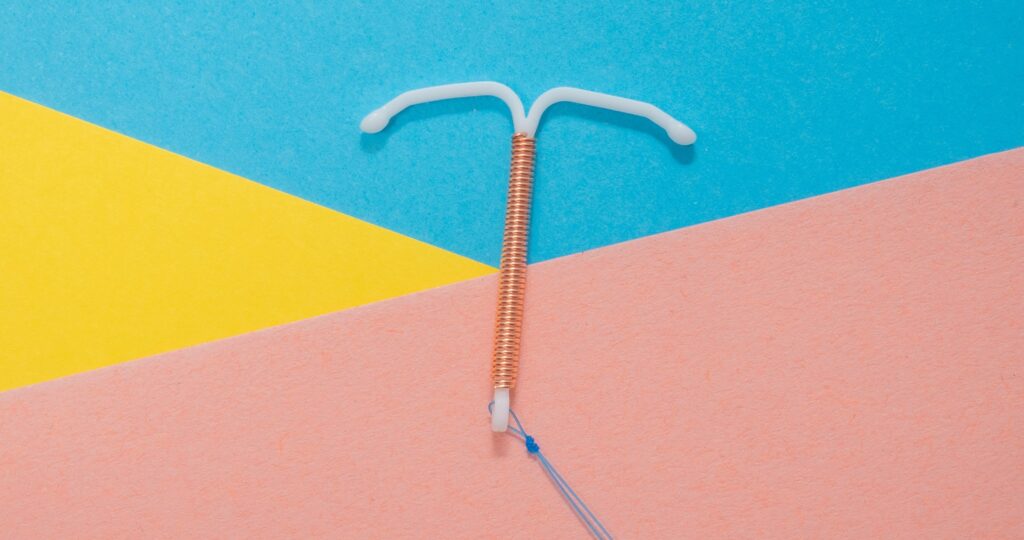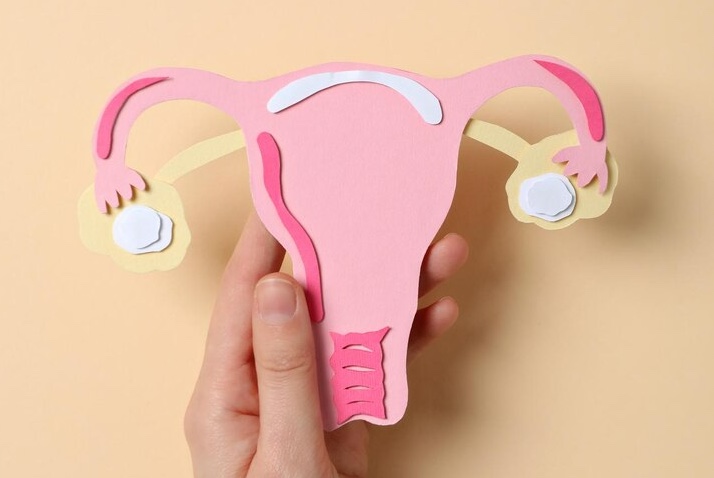News Team member Stephanie Oehler describes how the online "trad-wife" aesthetic fuels the flames of the anti-vaccination movement during the second-largest measles outbreak of the 21st century.
The Neglect of Pain Relief in IUD Insertion
New CDC guidelines address IUD insertion for the first time in eight years. Patients are still suffering.
By Ananya Dash
Women are filming themselves while getting an intrauterine device (IUD) inserted and posting them on TikTok. They are recording themselves while crying, screaming, and even passing out. The rise of women taking their plight to social media, and not to their doctors, exposes cracks in the care that women receive in medicine.
Research shows that IUD insertion can cause excruciating pain, highlighting the need to improve pain relief options. For example, in a study that asked women to pick a number between 0 and 10 to describe their pain during IUD insertion, half of them chose a number closer to 10. Current recommendations do not address the excess pain.
For years, women have been asked to take over-the-counter pain medications, such as ibuprofen, for the procedure. Multiple studies, however, show that neither ibuprofen nor similar drugs reduce pain associated with the insertion.
The lack of effective recommendations in place have prevented doctors from providing appropriate care to patients, despite their best intentions. Women undergoing IUD insertion feel isolated and helpless. They turn to social media platforms such as TikTok to commiserate with each other when no one else will listen to them.
The healthcare system must address the unbearable pain experienced by these patients and replace ineffective pain relief strategies. There is a dire need to improve the experience of IUD insertion to fit the needs of each individual. Otherwise, women may not consider IUDs as a feasible choice for birth control.
“Women’s health concerns and experiences of pain tend to get dismissed to a much greater extent than men”, says Sarah Hill, the author of This is Your Brain on Birth Control. “I have no doubt that that’s contributed to the feeling that IUD insertion was something that didn’t require special pain treatment, up until this point.”

Redressing long-term medical neglect
In 2024, the Centers for Disease Control and Prevention (CDC) made a long overdue recommendation for IUD insertions. The new guidelines advised doctors to counsel patients on potential pain before the insertion. This was in stark difference from 2016 recommendations that did not include any counselling.
Advice on pain medications was also broadened. Lidocaine, a local anesthetic can be used as a numbing spray and injection into the patient’s cervix – the region between the uterus and vagina. It delays how pain travels from the wall of the cervix to the brain. Previously, doctors were recommended to offer lidocaine in the form of injections only. Lidocaine spray will now be accessible to patients– easy to use without adding to the length of the procedure.
The changes made by the CDC this year, however, depicts a bigger issue in women’s health. Our healthcare system took eight years to propose improved pain relief options for IUD insertion.
For millennia, women in pain have been labeled as hysteric – a medical term to describe physical or mental conditions due to a moving womb inside a female’s body. This concept was proven wrong, but it exists in a different form now. Doctors perceive that women fabricate their pain and pretend to be sick according to a 2018 study published in Pain Research and Management.
It is not surprising that providers have repeatedly failed to estimate how much pain a woman may experience during IUD insertion. Patients rated their maximum level of pain from IUD insertion about two times higher than their doctor’s perception, according to a 2014 study in Contraception,
“People have different tolerances to pain. We have to be mindful of the spectrum of differences in their ability to manage and handle pain,” says Alison Swaims Kohlmeier, an assistant professor in the Department of Gynecology and Obstetrics at Emory University.

Our health system should make IUD insertion a pain-free endeavor, as it would incentivize their use. After all, IUDs are among the most highly effective and long-lasting forms of birth control. IUDs require no check-ins for years once inserted into the uterus, unlike birth control pills that need a daily reminder. They are convenient, need no action after insertion, and are 99 percent effective at preventing pregnancy.
“IUDs are the most effective methods outside of permanent sterilization”, says Dr. Tiffany Patrice Hailstorks, an Obstetrics and Gynecology specialist at Emory University. “But it is really important to have a patient-centered model about what works best for them.”
Patients want the most effective method of birth control. Their needs to get help with painful periods, acne, and pre-menstrual syndrome (PMS) symptoms, however, further shape Dr. Hailstorks final recommendations to them. This could reflect the similarity in the use of IUDs and birth control pills in the US.
Additionally, some doctors are dissuaded to offer IUDs to their patients due to the lack of adequate pain relief strategies.
Another factor that impacts patients’ decisions about birth control is where and how they obtain their information. They may learn about contraceptives from a trusted friend or family member, medical websites, or TikTok videos – the same spot where women share distressing experiences of getting an IUD inserted. A study published in Obstetrics & Gynecology shows that about forty percent of TikTok videos with the hashtag iud have a negative tone to them. Lack of adequate pain relief options drive such negative messaging.
Social media platforms such as Reddit have also served as a space for women to discuss IUDs, long before TikTok. A Reddit post titled ‘IUD insertion pain INCREDIBLY downplayed’ has about 35,000 comments. One of them says, “I had almost no cramping at all and did not need any painkillers. Meanwhile, my friend almost passed out from pain. Clearly, it’s very individual on how we react to the IUD”.
Improving IUD underuse with pain control
Adequate pain-relief options are the only way to make IUDs a more accessible option for birth control.
Until then, Dr. Hailstorks will continue to navigate strong viewpoints of her patients with a unique strategy. She, like other providers, shares websites with have evidence-based information with her patients. She then tells them, “Whatever your trusted sources are, whether that’s your best friend, Instagram, TikTok; you can look at that too, but weigh both of them, and then decide what you think is the best.” She believes that such an approach can give her patients the power to make the right decision for themselves.
Negative perceptions around IUDs are only a part of the problem. Scientists and clinicians need to the understand uterine pain better. Whether cramping in women is same as abdominal pain in men continues to be an open question. Dr. Anne Z. Murphy, professor at the Neuroscience Institute at the Georgia State University says, “I don’t think most people know the answer to that.”
The millions of nerve endings on the cervix and uterus can tell the brain what happens down there. “Patients may also bring in prior painful experiences in the physician’s office, history of sexual trauma or pain disorders such as endometriosis or musculoskeletal pain that can present in pelvis”, says Dr. Anne-Marie E Amies Oelschlager, pediatric gynecologist at the University of Washington School of Medicine, and the chair of the American College of Obstetricians and Gynecologists clinical consensus committee for gynecology. The CDC’s counseling step is key to learn a patient’s medical history.
Each of step of the procedure can evoke anxiety and pain in patients. The insertion starts with tenaculum, a pair of scissors with sharp-pointed hooks, that are used to hold the cervix and make it stable to see it. The next step is cleaning of the cervix wherein pain medication can be offered as an injection or a spray. The final step involves another device that places the IUD inside the uterus. Studies show that women who have had vaginal delivery feel less pain while getting an IUD inserted as compared to women who have not given birth. Other studies have not found a significant difference in women’s pain levels during insertion, irrespective of their birthing history. Despite the murky results, a patient’s history of vaginal delivery, intercourse, and even a pap smear test can help patients to anticipate the pain of insertion better.
Regulatory bodies have been slow to introduce pain relief options for IUD insertion, but that does not stop doctors in giving their best. They offer help to their patients with pain relievers, anxiety medications, hot packs, sedatives, or distractions like listening to music and talking about unrelated things, if needed. Many of these strategies may have limited evidence, but a spectrum of choices is still better than nothing.
The data on giving cervical injections, however, conflicted with high-quality gold standard trials until the last ten years. “It was not always worth to put patients through a longer procedure if it was not demonstrated to be effective”, says Dr. Oelschlager. “But the preponderance of the evidence seems to be swaying towards offering medication.”
Clinical practice must accommodate the needs of patients, but, until federal health guidelines are updated timely, women must continue to advocate for themselves. They should not succumb to the incompetency of the system, whether it’s IUD insertion or any other medical procedure,
“Women are brave enough to meet their potential now more so than ever”, says Kohlmeier . “Everyone in a society benefits by having these conversations and not just saying that this is what we do.”
Medical authorities can continue to debate one pain relief strategy over another for managing pain during IUD insertion, but a singular approach does not help every patient. It ignores the fact that pain is a subjective experience.
Instead, we can shift the narrative. We can focus on learning when a pain medication works for a patient and when it does not. Only then, we can accommodate the needs of women, instead of normalizing their pain.

